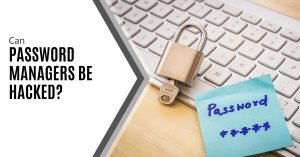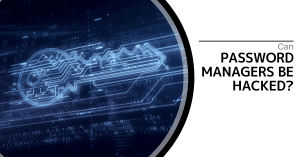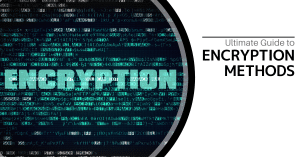Can Password Managers Be Hacked?
Password managers are designed to keep your credentials safe, but are they truly hack-proof? With cyber threats evolving, many users wonder if storing all their passwords in one place is a risk. In this article, we’ll explore how password managers work, potential vulnerabilities, and whether they are still the safest option for managing your passwords.
Table of Contents
- Introduction
- How Password Managers Work
- Notable Password Manager Security Incidents
- Common Attack Vectors Against Password Managers
- Security Measures Used by Password Managers
- Comparing Security Across Popular Password Managers
- Best Practices for Using Password Managers Safely
- Password Managers vs. Alternative Methods
- Conclusion: Are Password Managers Worth the Risk?
- FAQ: Password Manager Security
Introduction
In our digital lives, we face a challenging paradox: create unique, complex passwords for dozens of accounts while somehow remembering all of them. Password managers have emerged as the solution to this dilemma, offering to securely store all your passwords while only requiring you to remember one master password.
But this convenience raises an important security question: Can password managers be hacked? The short answer is yes—theoretically, any digital system can be compromised. However, the more nuanced and helpful answer requires understanding how password managers work, their security architecture, and how to use them safely.
This article examines the security of password managers in 2025, exploring real incidents, potential vulnerabilities, and whether they remain a recommended security practice despite these risks.
How Password Managers Work
Understanding password manager security starts with knowing how these tools function. Most password managers operate on a “zero-knowledge” security model with these key components:
- Encryption vault: Your passwords are stored in an encrypted database (the vault)
- Master password: The key that unlocks your vault, typically not stored anywhere
- Encryption algorithms: Most commonly AES-256, considered virtually unbreakable with current technology
The critical security principle is that the service provider cannot access your actual passwords because the encryption/decryption happens locally on your device, not on their servers.
The Encryption Process
When you save a password:
- The password manager encrypts your data using your master password
- Only the encrypted version is stored or synchronized across devices
- When needed, the data is decrypted locally using your master password
This architecture means that even if a password manager’s servers are breached, attackers only obtain encrypted data that’s extremely difficult to crack.
Notable Password Manager Security Incidents
While password managers maintain strong security records overall, several notable incidents have occurred:
| Company | Year | Incident | Impact |
| LastPass | 2022-2023 | Cloud storage breach | Encrypted vaults and related data stolen |
| Bitwarden | 2023 | Vulnerability in browser extension | Potential exposure of URLs (not passwords) |
| Norton Password Manager | 2024 | Credential stuffing attack | Some user accounts compromised |
| KeePass | 2023 | CVE-2023-32784 vulnerability | Potential partial master password exposure |
It’s worth noting that in most cases, properly implemented encryption prevented actual password exposure, and companies rapidly addressed vulnerabilities once discovered.
Common Attack Vectors Against Password Managers
Password managers can potentially be compromised through several methods:
1. Master Password Compromise
The most direct attack remains targeting the master password through:
- Phishing attacks designed to trick users into entering their master password
- Keyloggers that record keystrokes to capture the master password
- Brute force attempts against weak master passwords
2. Endpoint Vulnerabilities
Password managers typically operate within potentially vulnerable environments:
- Memory attacks that capture passwords when decrypted in system memory
- Malware that specifically targets password manager applications
- Screen capture malware that records when passwords are displayed on screen
3. Implementation Flaws
Software vulnerabilities within the password manager itself:
- Browser extension vulnerabilities exposing data to websites
- Cryptographic implementation errors weakening the encryption
- Insecure data handling during autofill or clipboard operations
4. Cloud Infrastructure Attacks
For password managers with cloud synchronization:
- Server breaches exposing encrypted vaults
- Man-in-the-middle attacks during synchronization
- API vulnerabilities allowing unauthorized access
Security Measures Used by Password Managers
Leading password managers implement multiple layers of security to protect against these threats:
- Strong encryption (typically AES-256) for the password vault
- Zero-knowledge architecture ensuring providers cannot access your data
- Key derivation functions (like PBKDF2) with high iteration counts to resist brute force attacks
- Two-factor authentication to prevent unauthorized access even if the master password is compromised
- Biometric authentication on mobile devices for convenient yet secure access
- Secure memory handling to minimize exposure of decrypted passwords
- Automatic session timeouts to protect against physical access to an unlocked device
- Security audits and bug bounty programs to identify and fix vulnerabilities
Comparing Security Across Popular Password Managers
While most mainstream password managers offer similar core security features, some differences exist:
- Local-only vs. cloud-based: KeePass stores passwords locally by default, while LastPass, 1Password, and Bitwarden offer cloud synchronization
- Open-source vs. proprietary: Bitwarden and KeePass are open-source, allowing community security review
- Independent security audits: Most leading services now undergo regular third-party security assessments
- Authentication options: Different managers offer varying 2FA methods and biometric authentication support
Security researchers generally agree that the major password managers maintain adequate security when properly used, with differences mainly in user experience, platform support, and specific features.
Best Practices for Using Password Managers Safely
To maximize password manager security:
- Create a strong, unique master password
- Use a long passphrase (15+ characters)
- Include a mix of character types
- Never reuse it for any other service
- Enable two-factor authentication
- Use an authenticator app rather than SMS when possible
- Consider hardware security keys for the highest level of protection
- Keep software updated
- Apply password manager updates immediately
- Keep your operating system and browsers updated
- Be alert to phishing attempts
- Verify URLs before entering your master password
- Consider using the password manager’s own interface rather than browser extensions
- Regularly audit your password vault
- Remove unused accounts
- Update and strengthen weak passwords
- Check for compromised passwords
Password Managers vs. Alternative Methods
Comparing common password approaches:
| Method | Security | Convenience | Risk Factors |
| Password Manager | High | High | Master password compromise |
| Password Reuse | Very Low | High | One breach compromises many accounts |
| Browser Password Storage | Moderate | High | Browser security vulnerabilities |
| Written Passwords | Varies | Low | Physical theft or loss |
| Memory-Only | Varies | Very Low | Forgetting; leads to weak passwords |
Security experts overwhelmingly recommend password managers as the best balance of security and usability for most users, despite their theoretical vulnerabilities.
Conclusion: Are Password Managers Worth the Risk?
Can password managers be hacked? Yes, under certain circumstances. However, when comparing the security risks of password managers against the alternatives, the conclusion is clear: password managers remain the most secure practical option for most users.
The primary security threats to password managers typically require either sophisticated targeted attacks or poor security practices by the user. Meanwhile, the protection they provide against password reuse, weak passwords, and phishing far outweighs these potential risks.
By choosing a reputable password manager, creating a strong master password, enabling two-factor authentication, and following security best practices, you can minimize the risks while greatly enhancing your overall digital security posture.
FAQ: Password Manager Security
Q: What happens if a password manager company is breached?
A: In most cases, only encrypted data would be exposed. Without your master password, which isn’t stored on their servers, attackers cannot decrypt your passwords.
Q: Should I use a cloud-based or local password manager?
A: Cloud-based managers offer convenience and protection against device loss, while local managers eliminate server breach risks. Most security experts consider reputable cloud-based options secure when properly used.
Q: Can password managers protect against phishing?
A: Yes. Most password managers will only autofill credentials on the correct website, helping identify fake sites that might fool the human eye.
Q: What’s the biggest security risk with password managers?
A: The master password. If it’s weak or compromised, all your stored passwords are at risk. Always use a strong, unique master password and enable two-factor authentication.
Q: Are built-in browser password managers secure enough?
A: Browser password managers have improved significantly but generally offer fewer security features than dedicated password managers. They’re better than password reuse but not as secure as specialized tools.











